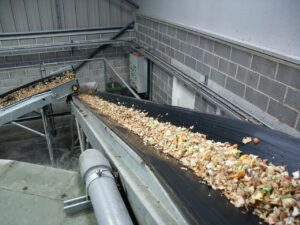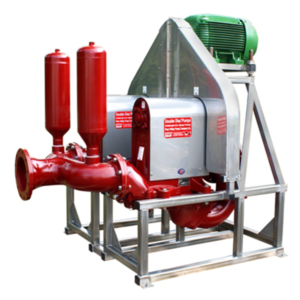Generally speaking, when people think of food waste, they think of what is left over after consumption or the scraps that are thrown away after preparation. When we talk about food waste in the pumping industry, we are referring to what is wasted during food production and food processing. This type of waste includes fats, oils and grease (FOG), as well as high strength waste/food waste like solid meats and dairy waste.
 With the increase in waste-to-energy projects, wastewater treatment plants are upgrading their systems and digesters for bio-gas production. Several of these plants now want to accept waste products high in BOD (biological oxygen demand) to help power their plants.
With the increase in waste-to-energy projects, wastewater treatment plants are upgrading their systems and digesters for bio-gas production. Several of these plants now want to accept waste products high in BOD (biological oxygen demand) to help power their plants.
The Importance of Managing Waste
Managing waste is essential when it comes to ensuring stable production in the food industry. Pumps play a key role in managing various types of food waste, that is why choosing the right pump for your particular application is critical.
Pumping food waste is no small feat. Choosing the wrong pump for this application could prove to be devastating to your bottom line. The pump must be able to reliably pump solids continuously without clogging. This can prove challenging in the meat and poultry industry where fats, oils, animal offal, wastewater and chemical byproducts are found. A pump must be able to get rid of substantial sized solids without fail.
The fishing industry proves to have its own set of challenges, too. Pumps need to be able to move fish waste – which is notorious for being a highly viscous slurry of fish parts, including scales, guts and bones. It is also known to be highly abrasive, containing large volume solids which can wear down the internal components of a pump quickly. This application requires a pump that can handle abrasive, high solids without clogging or breaking down. It must be able to run consistently throughout the production process.
Even vegetable processing can prove to be tricky, especially with potatoes and tomatoes. These vegetables produce starchy, thick slurries with quite a bit of solids. This type of waste also includes seeds, skins, pulp and other fibrous materials that can cause clogging and wear and tear on parts.
Choosing the Right Pump for Your Specific Application
In order to keep municipal wastewater sludge, scum and slurry moving, as well as dewatering feed, lime sludge and slurry pumping, a pump based on a non-close tolerance design provides longer operating life and less downtime.
Plants that must pump fats, oils, grease and food waste, like chicken and beef waste processing, need to rely on a pump that can generate flow and run smoothly no matter what it has to pump.
 A Double Disc Pump does just that. It is designed to move with a reciprocating valving action. This movement produces a light, low friction touching action of the discs on the seat which in turn creates a very low wear rate. This non-close tolerance design can handle applications with entrained grit and abrasive material.
A Double Disc Pump does just that. It is designed to move with a reciprocating valving action. This movement produces a light, low friction touching action of the discs on the seat which in turn creates a very low wear rate. This non-close tolerance design can handle applications with entrained grit and abrasive material.
PVP Double Disc Pumps are capable of handing FOG (fats, oils and grease), high strength waste/food waste and dairy waste that is being used to increase digester gas production to power plants around the country. Increased BOD into the digester creates more gas and you need more gas to help power the plant. Because these pumps feature two, non-captive discs working simultaneously to generate flow and have a very short stroke length that provides a small displacement per stroke.
The small displacement per revolution allows for relatively smooth flow as compared to traditional reciprocating pumps. These pumps also use pulsation dampeners that help to reduce the small pulse in flow. This allows the pump to be used for pulse sensitive dewatering operations, like food waste, that cannot be handled by typical reciprocating pumps.
Understanding what type of pump you need and being able to manage the high strength waste at your facility is key to a successful, efficient facility. If are looking for a cost-effective, fool-proof way to manage food waste in your facility- the double disc pump is here to help.